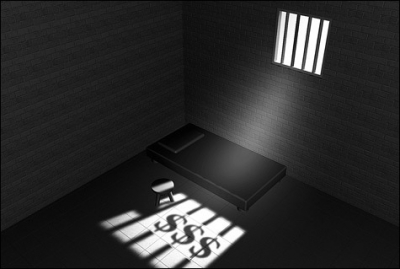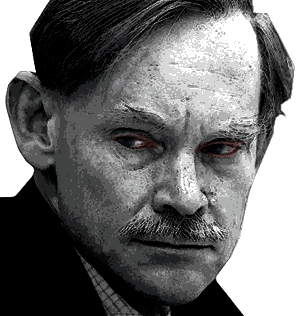Alex Constantine - August 3, 2014
By Lynn Holland, COHA
“We need you because we don’t have anyone who listens to us.” -- Milton Sanchez, arrested 50 times for protesting against the Conga Mine project without a single conviction
I climb shakily out of the van and blink into a cool breeze. It has been a four-hour ride up a rough winding road marked by spectacular glimpses of the Andes. Wild flowers sparkle on the hillsides but we are asked not to photograph anything. I trudge along behind my companions across the treeless terrain, a small pack on my back, in the combined misery of motion sickness and the shortness of breath that comes with being 12,500 feet up. I begin to believe I’m in an episode of Survivor and will soon be voted off the mountain.
We pass a small pristine lake and turn left onto a broad field that has been hand plowed as I head toward a small dwelling built from mud and straw. Our young host looks sharply back at the road at a lone truck that had been following us and was now parked by the side of the road. We are greeted warmly by his mother-in-law, Máxima Chaupe, a tiny woman with long dark hair in a full skirt and a bright sweater. She invites us to sit down on benches fashioned squarely from bales of hay on the narrow porch. Over an open fire, she prepares a meal of onion, tomato and roasted corn nuts and assorted little potatoes all freshly picked, and tells us about her family’s encounters with the mining company nearby.
Yanacocha
That company, Yanacocha, is the largest gold producer in Latin America.[1] It claims to own the land on which Máxima and her family are now living – land that is essential to its $4.8 billion expansion known as the “Conga” project.[2] It is 51 percent owned by Denver-based Newmont Mining Corporation while its Peruvian partner, Buenaventura, owns 46 percent and the International Finance Corporation (IFC), an arm of the World Bank, owns 5 percent. The company intends to dam a nearby river to provide for the energy needs of the mine and drain two fresh water lakes to be replaced elsewhere with artificial reservoirs. The extracted material will be deposited into two other lakes in the area. Yanacocha already has access to much of the land in Celendin and neighboring Cajamarca through concessions from the national government.
Large-scale mining is highly contentious in Peru as it is elsewhere in the world. Highlanders such as Máxima and those living downstream from the area’s rivers contend that the mining process has already dried up much of the water supply and contaminated what remains with arsenic and heavy metals.[3] The result has been the loss of fresh water fish and half of the region’s native bird species.[4] Since the coming of the mine to Cajamarca, crime, prostitution and begging have all increased, and Cajamarca has gone from being the fourth to the first most impoverished province in Peru.[5]
As she prepares our meal, Máxima tell us how she and her family have been harassed, followed, and even attacked in the last three years. On one occasion, police entered the property and, after ordering the family to leave, damaged their little hut, killed some of the livestock and beat her, then as they held guns to the heads of her husband and son, beat Máxima and one of her daughters until they were unconscious.[6] Only a month before, security personnel from the mining company had entered the property firing guns nearby in another attempt to drive them out. The family is constantly under surveillance from company-owned trucks. For its part, Yanacocha has denied that such events have ever taken place stating, “There have been no acts of aggression or hostility by Yanacocha towards the Chaupe family while trying to resolve the issue through the appropriate legal channels.” The company acknowledges that police were deployed onto the property on one occasion but only to prevent the “Chaupe incursion” onto Yanacocha property.[7]
Citizen Rights Under Threat
Over the last decade, government reform in Peru has run in different directions. On the positive side, a gradual shift from the inquisitorial model to the accusatorial model is making the judicial system more open and accessible. In most regions, defendants now have the right to submit declarations in response to charges brought against them, as well as to present a defense, and judges are expected to be impartial. A public defense office was recently opened to expand access to a fair, competent defense for those unable to afford it though access is still limited in rural areas.[8] In addition, there are a few legal services available to the poor such as GRUFIDES in Cajamarca, a human rights organization, which represents Máxima and her family against Yanacocha.
At the same time, the rapid growth of the mining sector has been accompanied by a corrosive effect on civil liberties and protections in Peru. Under the General Law of Expropriation passed in 1999, for instance, the government was given the power to expropriate privately owned land in the public interest by paying the landholder the appraised value of the land. Originally intended to support public works projects, the law is being utilized to facilitate mining and other private investments.
In many cases, these purchases have been made difficult or impossible where the land has been held communally. To deal with this difficulty, mining companies have urged that the land be converted into smaller private holdings to facilitate negotiation. Yanacocha itself “initiated a series of rapid land-titling initiatives” in 44 different communities in the Cajamarca region.[9] In the case of Máxima’s property, her family has documents showing their purchase of the land in 1994,[10] while Yanacocha insists it bought the land from an older family member a few years later. The case has been making its way slowly through the courts since Máxima’s refusal to vacate the property in 2011.
Another setback for civil protection has come with the passage of the Organic Law of the Peruvian National Police of 1999, which allows police directors to sign agreements with private companies for the provision of security services. They are able to do this either in conjunction with, or apart from their state duties, and are allowed to wear police uniforms and use state-provided weapons in either event. Under the agreements the companies can “request a rapid large-scale deployment of police units if protests are suspected” and even establish a permanent police security presence. The companies also provide logistical support including trucks, buses and vans for transporting the officers. Mirtha Vasquez of the human rights organization GRUFIDES, and Máxima’s attorney, told us that military soldiers and members of the paramilitary forces who once worked under Fujimori in the 1990s are often taken into the police and as such can be found in the employ of private companies.[11] The report identifies Yanacocha as a company that has contracted with the National Police for security purposes, and features a photograph of police forces being transported in vehicles owned by Yanacocha.
The government is also criminalizing protest itself.As Vasquez explained, a series of executive decrees passed in 2007 included a number of measures aimed at suppressing a wave of protest in mining regions. In the name of fighting organized crime, one of the decrees classifies social protest as “extortion” so that protestors can be put in prison for up to twenty-five years, a sentence that exceeds that often given to murderers. Another decree prohibits public officials from participating in strikes or demonstrations. A number of mayors and governors have denounced this as a means of hobbling local and provincial governments in poor and vulnerable areas where there is a great need for leadership.
As Vasquez tells us, hundreds of social leaders have been charged and jailed because they have been openly critical of the government. Usually, they are released without charges after a short time suggesting that the laws are being used mainly to disrupt political activism. She says that the authorities have been quite creative in this regard, putting women in jail for instance for bringing their children to the marches on the grounds that they are irresponsible parents. Others have been arrested for not having the money to pay for the six-hour bus ride to Chiclayo, where trials take place. There are many such absurd cases in Chiclayo, she says.
Perhaps the most serious attack on democracy and the rule of law is Law 30151. Passed in January of this year, this amendment to the penal code gives the police what some have called a “license to kill”. The law makes the police “exempt from criminal responsibility” should they cause injury or death through the use of their guns or other weapons while in the line of duty. In a divisive atmosphere already charged with hostility, many fear that environmentalists and other activists will be most likely to suffer the consequences. The measure has been condemned in statements issued by the Public Ombudsman’s office as well as the UN High Commissioner for Human Rights (OHCHR) and the Inter-American Commission on Human Rights (IACHR).[12]
Calling for Democracy
Citizens in Cajamarca and Celendin are calling for a more responsive government at all levels. Máxima tells us that things might have gone better if the municipal government had informed and consulted with the residents of Celendin before the mines actually had began operating. In Cajamarca, an opinion poll taken in 2012 showed that a majority of the population opposed the presence of Yanacocha by a wide margin, yet the government never consulted with the community on it.[13] Milton Sanchez, president of the Coalitional Platform, who staunchly oppose the Conga project, blames the ruling elite for having no interest either in democracy or the development of the Peruvian people. “We have to be democratic,” he tells us emphatically. “Right now, there is no space for discussion.”
In Lima, political consultant Raul Mauro told us that the real problem was “an environment of exclusion.” He referred to the “Lima Consensus,” a view that has triumphed in the capital city despite the decline of the “Washington Consensus” in other Latin American countries. Through this “consensus”, he says, the Lima elite and much of the middle class have aggressively promoted privatization, deregulation, and steep cuts in social programs. Those who oppose it are often labeled “subversives” or “foreign” agitators.
While the Lima Consensus has found expression through the Ministry of Economy, environmentalists have found advocates in the Ministry of the Environment established in 2008. Unfortunately, however, only one of these ministries is known to wield significant power. The Ministry of Economy, we were told, is well connected to wealthy families in Peru and is widely regarded as the center of political power in the country. The Ministry of Environment, on the other had, was recently stripped of its jurisdiction over air, soil and water quality standards and the ability to establish nature reserves exempt from mining and fossil fuel drilling. This has left rural residents and environmentalists without a voice in the agency level. Now more than ever, says Mauro, the country needs a plan for working together.
Anthropologist Javier Torres finds fault on both sides of the conflicts. Both the government and leftist leaders who lead the environmentalist movement have allowed tensions to rise by refusing to engage in negotiation. He calls for a nationwide consultation for all large investment projects and transparency in matters related to mining and energy projects. “We want a state that will no longer be the promoter of investment mining but one that is capable of arbitrating disputes and enforcing regulations.” Ultimately, the perception of Peru as a mining Mecca will be hurt, he says, without some resolution of social conflicts connected to mining.[14] But the question is whether Torres is being practical in what he is advocating, which is something to everybody.
* * *
After our meal on the mountain, my companions and I admire a dramatic view of the Andes from behind Máxima’s house. Rabbits scamper freely in the garden while cattle graze in the pasture below. Máxima will be traveling back down the mountain with us to stay a while in Celendin. We leave her house to walk back to the van and notice that once again, a vehicle from the mining company is following us. The wind blows softly as we gaze out toward the road. There is no one else around but I’m less concerned now than when I first arrived. I am strengthened by the home cooked meal I’ve just had and buoyed by the heroic little figure marching along beside us. We have a wonderful life here, she tells us. On one arm she carries a wool blanket to wrap around her in the evening and on her head she wears the proud straw hat of the highlander women.
Lynn Holland, PhD and Senior Research Fellow at the Council on Hemispheric Affairs
References:
[1] Newmont Mining Corporation Website, “The South American Operation,” 2014, http://www.newmont.com/south-america
[2] Newmont Mining Corporation Website, “Conflicto de la Tierras con la Familia Chaupe,” 2014, http://www.yanacocha.com.pe/wp-content/uploads/2014/04/Familia-Chaupe_Marzo.pdf
[3] Alice Bernard and Diego Cupolo, “Scientist Calls Peru Conga Mining Project an ‘Environmental Disaster:’ Interview with Reinhard Seifert,” Upside Down World, May 1, 2012, http://upsidedownworld.org/main/peru-archives-76/3608-scientist-calls-peru-conga-mining-project-an-environmental-disaster-interview-with-reinhard-seifert
[4] Alice Bernard and Diego Cupolo, Peru: Cajamarca Protests Continue as Conga Gold Mine Awaits Green Light, Upside Down World, March 29, 2012,
http://upsidedownworld.org/main/peru-archives-76/3544-peru-cajamarca-protests-continue-as-conga-gold-mine-awaits-green-light
[5] Ronald Ancalima Ojeda, “El Derecho al Desarollo,” Gestión Sostenible del Agua, May 5, 2012, http://gsagua.com/2014/05/05/el-derecho-al-desarrollo/
[6] Máxima’s daughter made a recording of one such incident using a cell phone, which can be viewed here: http://mama-tierra.org/maxima-acuna-defender-water/. A log of events occurring on Chaupe land including police intimidation along with documentation can be found here: http://redulam.org/peru/1814/.
[7] Newmont Mining Corporation, “Chaupe Family Land Dispute,” 2014, http://www.newmont.com/sites/default/files/Familia%20Chaupe_Marzo_Ing.pdf
[8] Ross Boone, “Reform of the Criminal System in Peru,” Human Rights Brief, March 27, 2014, http://hrbrief.org/2014/03/reform-of-the-criminal-justice-system-in-peru/
[9] US Aid from the American People, “US Aid Country Profile, Property Rights and Resource Governance,” http://usaidlandtenure.net/sites/default/files/country-profiles/full-reports/USAID_Land_Tenure_Peru_Profile.pdf
[10] Corporación Colectivos de Abogados (CCA), “Conoce y Apoya la Digna Lucha de Máxima Acuña Chaupe Contra La Mineria (Yanacocha y Conga) en Cajamarca Peru,” 2014 http://ccalcp.org/ARTICULOS%20BOLETIN%20V/03_CONOCE%20Y%20APOYA%20LA%20DIGNA%20LUCHA%20DE%20MAXIMA%20CHAUPE%20ACU%C3%91A%20CONTRA%20LA%20MINERA%20YANACOCHA%20EN%20PERU.pdf
[11] Human Rights Without Frontiers, Police in the Pay of Mining Companies: The responsibility of Switzerland and Peru for Human Rights Violations in mining disputes, December 2013, http://assets.gfbv.ch/downloads/report_english_def_2_12_13.pdf
[12] Luis Manuel Claps, “Police Repression Legalized as Mining Protests Grow in Peru,” NACLA, February 13, 2014, https://nacla.org/blog/2014/2/13/police-repression-legalized-mining-protests-grow-peru
[13] Ejolt Report No. 7, “Mining Conflicts Around the World,” September 12, 2012, p. 101, http://repub.eur.nl/pub/38559/metis_183590.pdf
[14] Actualidad Ambiental, “Javier Torres (SER) explico los diversos conflictos sociales en Puno,” June 28, 2011, http://www.actualidadambiental.pe/?p=11154

COHA, or Council on Hemispheric Affairs, was founded in 1975, the Council on Hemispheric Affairs (COHA), a nonprofit, tax-exempt independent research and information organization, was established to promote the common interests of the hemisphere, raise the visibility of regional affairs and increase the importance of the inter-American relationship, as well as encourage the formulation of rational and constructive U.S. policies towards Latin America.








